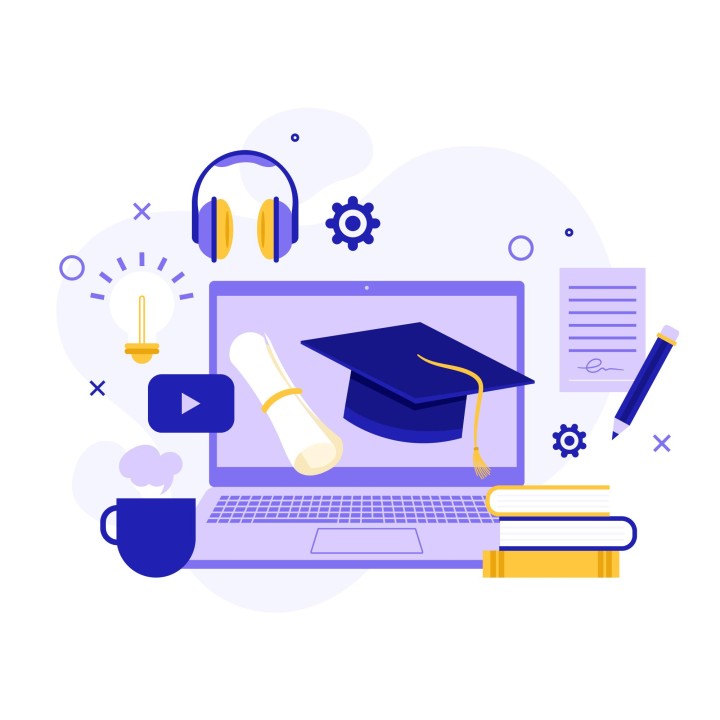Teaching Today: Social Media Strategies for 21st Century Educators

Social Media Strategies: In the ever-evolving landscape of education, the role of teachers has transcended traditional boundaries. The 21st century educator is not merely a disseminator of knowledge; they are curators of dynamic learning environments, harnessing the power of technology to engage, inspire, and connect with students. This exploration, titled “Teaching Today: Social Media Strategies for 21st Century Educators,” delves into the transformative ways in which social media has become an indispensable tool for modern educators, reshaping pedagogy, fostering collaboration, and cultivating a vibrant educational community.
The Digital Evolution of Education
From Chalkboards to Tweets
- A Paradigm Shift in Teaching: The 21st century has witnessed a paradigm shift in teaching methodologies. Traditional chalkboards have given way to interactive whiteboards, and now, social media platforms have become the digital chalkboards where educators paint the canvas of modern education.
- Social Media as Educational Catalyst: Social media is not just a tool for socializing; it has evolved into a catalyst for educational innovation. Embracing platforms such as Twitter, Instagram, Facebook, and LinkedIn, educators are leveraging these spaces to enrich the learning experience and prepare students for the challenges of a digital world.
Twitter: A Global Faculty Lounge
#EdTech and Professional Development
- #EdTech: A Twitter Conversation: Twitter emerges as a dynamic faculty lounge under hashtags like #EdTech. Educators from diverse backgrounds engage in real-time conversations about educational technology, sharing insights, resources, and best practices.
- Professional Development in 280 Characters: The brevity of tweets doesn’t diminish the depth of professional development on Twitter. Teachers exchange ideas, attend virtual conferences, and participate in Twitter chats, collectively enhancing their skills in bite-sized, digestible doses.
Instagram: A Visual Chronicle of Education
#TeacherLife and Creative Classrooms
- #TeacherLife: A Visual Diary: Instagram becomes a visual diary under the hashtag #TeacherLife. Educators share glimpses of their daily experiences, offering a behind-the-scenes look at the joys, challenges, and creative endeavors that shape their teaching journey.
- Creative Classrooms in Square Frames: Instagram allows teachers to showcase their creative classroom setups. From interactive displays to innovative learning materials, educators use visuals to inspire both students and fellow teachers, fostering a culture of continuous improvement.
Facebook: Community Building and Resource Sharing
Professional Learning Communities
- Dedicated Teacher Groups: Facebook transforms into a hub for professional learning communities. Educators join groups tailored to their subjects, grade levels, or specific teaching methodologies, creating virtual communities where collaboration thrives.
- Resource Sharing and Peer Support: Within these Facebook communities, resource sharing becomes commonplace. Teachers upload lesson plans, recommend teaching materials, and seek advice from peers, turning the platform into a dynamic repository of collective knowledge.
LinkedIn: Elevating Educator Profiles
Building a Professional Brand
- LinkedIn Profiles as Digital Resumes: LinkedIn transcends its role as a professional networking site to become a digital resume for educators. Teachers curate profiles that showcase their educational achievements, skills, and contributions to the field.
- Connecting with Educational Influencers: LinkedIn facilitates connections with educational influencers and thought leaders. Educators engage in discussions, share research findings, and contribute to the broader discourse on the future of education.
YouTube: Educational Vlogs and Multimedia Learning
Teachers as Content Creators
- Educational Vlogs: Bringing Lessons to Life: YouTube becomes a platform for educational vlogs where teachers bring lessons to life. Through video content, educators share teaching strategies, experiment demonstrations, and interactive lessons, making learning a visual and engaging experience.
- Multimedia Learning Materials: Teachers leverage YouTube to create multimedia learning materials. From virtual field trips to instructional videos, the platform enhances the educational toolkit, providing students with diverse and interactive resources.
Humanizing Education Through Social Media Strategies
Authenticity and Student-Centric Approaches
- Authenticity in the Digital Space: Social media strategies allow educators to showcase authenticity. By sharing personal experiences, challenges, and successes, teachers humanize their online presence, creating a relatable image for both students and colleagues.
- Student-Centric Approaches in the Digital Classroom: Social media platforms facilitate student-centric approaches. Teachers acknowledge and celebrate student achievements, creating an inclusive online environment that recognizes individual contributions and fosters a sense of community.
Navigating Challenges and Seizing Opportunities
Privacy Concerns and Digital Citizenship
- Balancing Privacy and Connectivity: The integration of social media in education demands a delicate balance between privacy concerns and the benefits of connectivity. Teachers and students must navigate the digital landscape with a keen awareness of responsible online behavior.
- Educating for Digital Citizenship: Social media strategies become an opportunity to educate students about digital citizenship. Discussions around digital etiquette, cyber safety, and responsible online conduct become integral components of the educational journey.
Equity in Digital Learning
- Ensuring Equal Access: As social media becomes a tool for education, ensuring equal access is paramount. Teachers must consider factors such as device availability and internet access to bridge the digital divide and create an inclusive learning environment.
- Customizing Learning for Diverse Needs: The flexibility of social media platforms allows educators to customize learning experiences for diverse student needs. Whether through adaptive learning materials or tailored engagement strategies, teachers can address different learning styles.
The Future of Teaching: Embracing Change
Emerging Technologies and Collaborative Trends
- Artificial Intelligence (AI) in Education: The integration of AI promises personalized learning experiences. Adaptive learning platforms analyze individual student progress, tailor content, and provide real-time feedback, ushering in a new era of responsive education.
- Virtual Reality (VR) and Augmented Reality (AR): VR and AR technologies redefine the classroom experience. Virtual field trips, immersive simulations, and collaborative projects in augmented environments become commonplace, blurring the lines between physical and digital learning.
In Conclusion: Nurturing Minds in the Digital Era
As we navigate the expansive landscape of teaching in the 21st century, it is evident that social media is not merely a tool; it is a catalyst for educational transformation. “Teaching Today: Social Media Strategies for 21st Century Educators” celebrates the innovative ways in which educators leverage these platforms to enrich the learning experience, foster collaboration, and create vibrant communities.
In this era of constant change, teachers are not just educators; they are architects of dynamic, interconnected learning environments. Social media strategies empower them to transcend traditional boundaries, connecting with students, colleagues, and a global community of educators. As we look to the future, the vision of teaching is one where technology and humanity converge, creating a learning journey that is dynamic, inclusive, and prepared to meet the challenges of tomorrow’s educational landscape.








